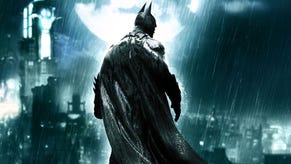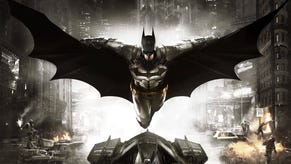Batman: Arkham City
Knight vision.
I'm playing Batman: Arkham City on a cinema screen. It's just me, in the middle row of the Warner Bros. private screening room in London, with Dax Ginn, Rocksteady's effervescent Aussie marketing man. I've had worse afternoons, it has to be said.
It's a fitting venue for a game with such lofty cinematic aspirations, and a striking reminder of just how far the artistry and technology of the medium have come - no longer is it simply in revenues that the small screen rivals its big entertainment brother.
And it's also a chance to get a proper feel for the game from the perspective not just of its protagonist, but his playable counterpoint, Catwoman.
Superficially, Batman is another big-name action sequel coming out during the silly season of seemingly endless action sequels - but one Ginn insists cannot be dismissed as playing it safe, despite the huge success of Arkham Asylum's formula.
"The studio absolutely hums with a hunger for innovation," he says. "When I look at what we've managed to implement within Arkham City, the size of the game world, the detail in there, what we've done with Batman's navigation, the combat, the dark psychology of the man as well, the exploration that we go into not always looking into him as a hero but also as a man… I think Batman: Arkham City is an incredibly innovative game."
Few would have complained too noisily had the team simply copied the basic Arkham Asylum blueprint and bundled in another compelling story. But the clue to the major point of difference for the sequel is in the title: a city for gamers to explore. Which meant an open-world game for Rocksteady to build. "The objective for us wasn't to make the biggest open-world game ever, it was to make the most detailed open-world game ever," Ginn explains. "We wanted to bring that out onto the streets and write it large on the canvas of Gotham City."
What this means for the experience is immediately apparent in my demo, which begins with Batman poised dramatically on the roof of a tall building, the dense urban sprawl of Gotham stretching out all around and into the dark, dangerous night.
Batman's enhanced gliding and grappling hook abilities make navigating this vast playground - Rocksteady claims the world is five times the size of its predecessor - a joy in itself.
A new diving manoeuvre allows him to float gracefully over a group of enemies then plunge down at them, switching seamlessly into a combo attack. The combat system of the original has been overhauled to expand the scope of the available move set which, with good timing, can be chained together into physically satisfying, visually arresting sequences. And equipment, like the grappling hook and batarangs, can now be chained in for even greater impact.
Catwoman's sections are said to take up roughly a tenth of the main experience, her narrative closely intertwined with The Dark Knight's. There's hardly a shortage of alternative candidates in the narrative universe, so why her?
"Because she is a criminal, because she does have a different agenda to Batman," Ginn explains. "Her moral compass isn't rigid at all, whereas Batman's absolutely is, so when you're playing as Catwoman you get to explore areas of the city not even Batman is able to go to.
"It really gives us a lot of flexibility in terms of the gameplay we can offer," he adds. "And also a nice change of pace - when she moves, she's fast, but doesn't hit as hard as Batman. When you switch control to Batman, he's not as fast as she is, but when he hits he really hits like a tank."









